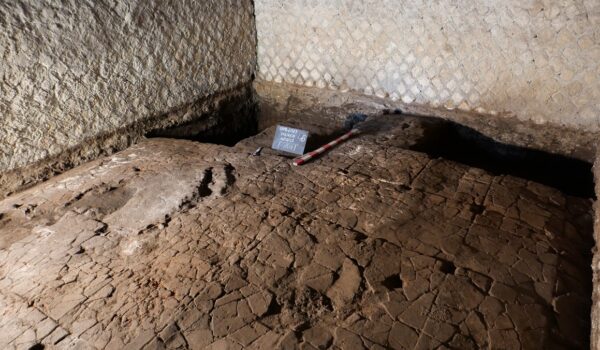To the south, highlighted in green, are the remains of barrel-vaulted storage spaces that supported apartments on the second floor. In room 10 excavators found the remains of 54 skeletons of victims seemingly awaiting rescue but overwhelmed by the force of the volcano (D’Ambrosio 1987; Ward 2016). Since its first discovery scholars have dated the complex based on construction materials in a manner that is typical of Pompeian archaeology. The presence of columns built from large drums of Nocera Tuff stone in the courtyard led to the inevitable conclusion that the core of the structures dated to the midsecond century BC (Maggi 1977; Malandrino 1981; Lagi de Caro 1983; Fergola 2004). The complex has remained largely unstudied ever since its discovery despite its significant potential to contribute to the story of the region. Starting in 2012, the Oplontis Project has taken on the mission to study the buildings and their artifacts using art-historical, artifact, and architectural analysis, as well as archaeological excavations (Thomas 2013; Van der Graaff et alii 2016; Van der Graaff 2016; Van der Graaff et alii 2019; Clarke et alii 2021; Van der Graaff et alii 2023). This article presents the results of those studies including the campaign conducted in 2023. It proposes new dates for the six excavated buildings as well as a minimum of five construction sequences over the lifetime of the building.

Early Results of the 2023 Excavation Season at Oplontis Villa B
When Vesuvius erupted in AD 79 the site known today as Oplontis, Villa B was a busy commercial and residential complex located along the coast about three miles from ancient Pompeii. Italian authorities unearthed it between 1974 and 1991 in a series of campaigns together with its more famous neighbor, Villa A also known as the Villa of Poppaea. Today the site presents a layout centered around a two-story colonnaded courtyard. Excavators found over 1400 amphorae in the process of being washed and readied to receive a new vintage of wine (Thomas 2015; Thomas 2016; Muslin 2016; Pecci et alii. 2017; Muslin 2019; Van der Graaff Muslin forthcoming). To the north, highlighted in yellow, the site preserves the ruins of a Roman street lined with two-story rowhouses (Van der Graaff et alii 2020).

